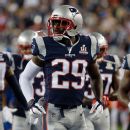As we do each week, we recap the week’s winners and losers from a fantasy perspective, complete with applicable game and historical data. Check back after the conclusion of the 1 and 4 p.m. ET (and, when applicable, Sunday Night Football) games for our picks of the week’s best and worst.
Winners
 DeAndre Hopkins, WR, Houston Texans: Who cares who is throwing him the football? Hopkins continues to carry his fantasy teams with huge scores, like his 35.9 PPR points that was tops among all players during the 1 p.m. ET games. It was the fourth time in his career that he had scored at least 35, and in each of the four he had a different quarterback throwing to him: Ryan Fitzpatrick for his career-best 44.8 in 2014 Week 13, Brian Hoyer for his 36.8 in 2015 Week 6, Deshaun Watson for his 36.4 in 2017 Week 8 and Tom Savage relieved by T.J. Yates on Sunday. Hopkins found his way onto a high percentage of ESPN playoff teams (49.5 percent, seventh-highest among wide receivers, and he was the second most-started wide receiver of Week 14 (98.8 percent of leagues). He has given his teams an excellent chance at advancing in the playoffs.
DeAndre Hopkins, WR, Houston Texans: Who cares who is throwing him the football? Hopkins continues to carry his fantasy teams with huge scores, like his 35.9 PPR points that was tops among all players during the 1 p.m. ET games. It was the fourth time in his career that he had scored at least 35, and in each of the four he had a different quarterback throwing to him: Ryan Fitzpatrick for his career-best 44.8 in 2014 Week 13, Brian Hoyer for his 36.8 in 2015 Week 6, Deshaun Watson for his 36.4 in 2017 Week 8 and Tom Savage relieved by T.J. Yates on Sunday. Hopkins found his way onto a high percentage of ESPN playoff teams (49.5 percent, seventh-highest among wide receivers, and he was the second most-started wide receiver of Week 14 (98.8 percent of leagues). He has given his teams an excellent chance at advancing in the playoffs.
 Rod Smith, RB, Dallas Cowboys: The Cowboys’ fill-in running backs during Ezekiel Elliott’s suspension have performed decently — Alfred Morris and Smith have combined for 113.0 PPR fantasy points on 134 touches in five games — but Smith’s performance on Sunday was either player’s best yet. The third-year player scored 33.0 PPR fantasy points, tops among running backs during the 1 p.m. ET games, obliterating his previous career high and in fact nearly doubling his season total entering the week (40.7). Smith made one big play count, scoring 15.1 of his 33.0 on an 81-yard touchdown on a short pass with just over four minutes to play, and he capped his day with a 15-yard rushing touchdown a little more than a minute later. That strong finish could — and should — make him a popular addition in the 73.0 percent of ESPN leagues in which he remains available, as he and the Cowboys face the Oakland Raiders in Week 15.
Rod Smith, RB, Dallas Cowboys: The Cowboys’ fill-in running backs during Ezekiel Elliott’s suspension have performed decently — Alfred Morris and Smith have combined for 113.0 PPR fantasy points on 134 touches in five games — but Smith’s performance on Sunday was either player’s best yet. The third-year player scored 33.0 PPR fantasy points, tops among running backs during the 1 p.m. ET games, obliterating his previous career high and in fact nearly doubling his season total entering the week (40.7). Smith made one big play count, scoring 15.1 of his 33.0 on an 81-yard touchdown on a short pass with just over four minutes to play, and he capped his day with a 15-yard rushing touchdown a little more than a minute later. That strong finish could — and should — make him a popular addition in the 73.0 percent of ESPN leagues in which he remains available, as he and the Cowboys face the Oakland Raiders in Week 15.
 Jamaal Williams, RB, Green Bay Packers: For the third consecutive week, Williams scored at least 20 PPR fantasy points, joining Alvin Kamara (five games, Weeks 9-13), Leonard Fournette (three games, Weeks 4-6) and Kareem Hunt (three games, Weeks 1-3) as the four rookie running backs with a streak at least that long this season. Williams’ 30.8 points on Sunday represented the most that he has scored in any of his 13 career games to date, as well as the second straight week he has had a big game while fellow rookie Aaron Jones has played a minimal role. Jones played two snaps to Williams’ 46 and had 8.0 PPR fantasy points on only one rushing attempt in Week 13, and Jones played seven snaps to Williams’ 52 and had minus-0.2 PPR fantasy points on four rushing attempts on Sunday, per Pro Football Focus’ Nathan Jahnke. Williams’ start percentage dropped from 69.6 percent in Week 13 to 45.2 percent on Sunday, but after a game like this, doesn’t it make a lot more sense for the Packers to simply stick with him as the starter next week?
Jamaal Williams, RB, Green Bay Packers: For the third consecutive week, Williams scored at least 20 PPR fantasy points, joining Alvin Kamara (five games, Weeks 9-13), Leonard Fournette (three games, Weeks 4-6) and Kareem Hunt (three games, Weeks 1-3) as the four rookie running backs with a streak at least that long this season. Williams’ 30.8 points on Sunday represented the most that he has scored in any of his 13 career games to date, as well as the second straight week he has had a big game while fellow rookie Aaron Jones has played a minimal role. Jones played two snaps to Williams’ 46 and had 8.0 PPR fantasy points on only one rushing attempt in Week 13, and Jones played seven snaps to Williams’ 52 and had minus-0.2 PPR fantasy points on four rushing attempts on Sunday, per Pro Football Focus’ Nathan Jahnke. Williams’ start percentage dropped from 69.6 percent in Week 13 to 45.2 percent on Sunday, but after a game like this, doesn’t it make a lot more sense for the Packers to simply stick with him as the starter next week?
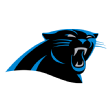 Jonathan Stewart, RB, Carolina Panthers: In large part because of the time-share in the Panthers’ backfield, Stewart has been rather difficult to predict from week to week this season. He scored 28.3 fantasy points (either PPR or non-PPR), his second-best single-game total in 129 career contests behind only his 30.2 in 2009 Week 16 using PPR scoring and career-best using non-PPR, on 16 rushing attempts. That’s quite a difference from Stewart’s production six weeks ago, when he scored minus-1.9 PPR fantasy points on 11 rushing attempts in one of the worst games by a running back in history. Unfortunately, here’s the story of his season in fantasy terms: Stewart was started in 44.4 percent of ESPN leagues in Week 9, but in only 8.87 percent of leagues on Sunday.
Jonathan Stewart, RB, Carolina Panthers: In large part because of the time-share in the Panthers’ backfield, Stewart has been rather difficult to predict from week to week this season. He scored 28.3 fantasy points (either PPR or non-PPR), his second-best single-game total in 129 career contests behind only his 30.2 in 2009 Week 16 using PPR scoring and career-best using non-PPR, on 16 rushing attempts. That’s quite a difference from Stewart’s production six weeks ago, when he scored minus-1.9 PPR fantasy points on 11 rushing attempts in one of the worst games by a running back in history. Unfortunately, here’s the story of his season in fantasy terms: Stewart was started in 44.4 percent of ESPN leagues in Week 9, but in only 8.87 percent of leagues on Sunday.
 Davante Adams, WR, Packers: The Packers had several fantasy stars in their 27-21 overtime victory at Cleveland, but Adams was the one who scored the game-tying touchdown with 17 seconds remaining as well as the winning touchdown in overtime. Those two plays alone were worth 16.6 PPR fantasy points, helping push his final score to 30.4, the second-best in any of his 58 career games. Adams fantasy value could be somewhat in flux heading into Week 15 because of Aaron Rodgers’ (collarbone) impending return, as Jordy Nelson often seemed to be Rodgers’ preferred target with Adams drawing more looks from fill-in Brett Hundley. Rodgers’ return would be a boost to the entire offense, however, and should lock Adams into WR2 status at Carolina.
Davante Adams, WR, Packers: The Packers had several fantasy stars in their 27-21 overtime victory at Cleveland, but Adams was the one who scored the game-tying touchdown with 17 seconds remaining as well as the winning touchdown in overtime. Those two plays alone were worth 16.6 PPR fantasy points, helping push his final score to 30.4, the second-best in any of his 58 career games. Adams fantasy value could be somewhat in flux heading into Week 15 because of Aaron Rodgers’ (collarbone) impending return, as Jordy Nelson often seemed to be Rodgers’ preferred target with Adams drawing more looks from fill-in Brett Hundley. Rodgers’ return would be a boost to the entire offense, however, and should lock Adams into WR2 status at Carolina.
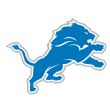 Theo Riddick, RB, Detroit Lions: Making his second consecutive start in place of Ameer Abdullah, who was inactive because of what was reportedly a coach’s decision rather than his neck injury, Riddick challenged his career high in PPR fantasy points. His 27.3 fell just a half a point shy of his career best set in 2016 Week 1 (27.8), but they were also his most since 2016 Week 8 (also 27.3) and gave him a second straight week with at least 17.2. Riddick seems to be shaping up as the Lions’ goal-line back, passing-down back and an option on first and second downs, giving him a chance at weekly RB2 value for the remainder of the year. He remains available in 43.5 percent of ESPN leagues and was started in 19.9 percent on Sunday.
Theo Riddick, RB, Detroit Lions: Making his second consecutive start in place of Ameer Abdullah, who was inactive because of what was reportedly a coach’s decision rather than his neck injury, Riddick challenged his career high in PPR fantasy points. His 27.3 fell just a half a point shy of his career best set in 2016 Week 1 (27.8), but they were also his most since 2016 Week 8 (also 27.3) and gave him a second straight week with at least 17.2. Riddick seems to be shaping up as the Lions’ goal-line back, passing-down back and an option on first and second downs, giving him a chance at weekly RB2 value for the remainder of the year. He remains available in 43.5 percent of ESPN leagues and was started in 19.9 percent on Sunday.
 Dak Prescott, QB, Cowboys: He might have found his way onto playoff rosters in only 34.7 percent of ESPN leagues, but he saved one of his better scores for a critical playoff week, leading all quarterbacks during the 1 p.m. ET hour with 26.58 fantasy points. It was his first of any of his five games played during Elliott’s suspension that he scored even 15, and on Sunday alone he nearly matched his total of 30.08 from Weeks 10-13. Prescott, who threw for at least 300 yards and three touchdowns for only the second time in his career, gets another great matchup in Week 15 at Oakland.
Dak Prescott, QB, Cowboys: He might have found his way onto playoff rosters in only 34.7 percent of ESPN leagues, but he saved one of his better scores for a critical playoff week, leading all quarterbacks during the 1 p.m. ET hour with 26.58 fantasy points. It was his first of any of his five games played during Elliott’s suspension that he scored even 15, and on Sunday alone he nearly matched his total of 30.08 from Weeks 10-13. Prescott, who threw for at least 300 yards and three touchdowns for only the second time in his career, gets another great matchup in Week 15 at Oakland.
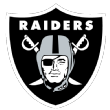 Jared Cook, TE, Raiders: He certainly seems to have the Kansas City Chiefs’ number, as for the second time this season, he scored at least 16.7 PPR fantasy points against them. His 18.5 on Sunday led all tight ends during the 1 p.m. ET games, and gave him the two best single-game scores by any tight end against the Chiefs all season — significant in that the Chiefs entered Week 14 having allowed the fifth-fewest PPR fantasy points per game to the position (9.5). The almost entirely unpredictable Cook — he had terrible scores in Weeks 12 and 13 facing outstanding matchups — was started in just 41.5 percent of ESPN leagues on Sunday, his lowest percentage since Week 7 (31.4 percent, also against the Chiefs).
Jared Cook, TE, Raiders: He certainly seems to have the Kansas City Chiefs’ number, as for the second time this season, he scored at least 16.7 PPR fantasy points against them. His 18.5 on Sunday led all tight ends during the 1 p.m. ET games, and gave him the two best single-game scores by any tight end against the Chiefs all season — significant in that the Chiefs entered Week 14 having allowed the fifth-fewest PPR fantasy points per game to the position (9.5). The almost entirely unpredictable Cook — he had terrible scores in Weeks 12 and 13 facing outstanding matchups — was started in just 41.5 percent of ESPN leagues on Sunday, his lowest percentage since Week 7 (31.4 percent, also against the Chiefs).
 Trey Burton, TE, Philadelphia Eagles: Thrust into the primary pass-catcher role with Zach Ertz (concussion) sidelined, Burton set career highs with 19.1 non-PPR and 24.1 PPR fantasy points on six targets. He was a popular pickup during the course of the day, perhaps in large part by managers seeking a last-minute replacement for Ertz, as he was started in a career-high 8.82 percent of ESPN leagues (topping his 8.38 percent in Week 9), was added in nearly 10 percent of leagues within the past week and roughly 3.3 percent between 1 and 4:30 p.m. ET alone. Should Ertz miss Week 15, Burton would face a great matchup against the New York Giants, so he’s well worth a stash if he’s still out there.
Trey Burton, TE, Philadelphia Eagles: Thrust into the primary pass-catcher role with Zach Ertz (concussion) sidelined, Burton set career highs with 19.1 non-PPR and 24.1 PPR fantasy points on six targets. He was a popular pickup during the course of the day, perhaps in large part by managers seeking a last-minute replacement for Ertz, as he was started in a career-high 8.82 percent of ESPN leagues (topping his 8.38 percent in Week 9), was added in nearly 10 percent of leagues within the past week and roughly 3.3 percent between 1 and 4:30 p.m. ET alone. Should Ertz miss Week 15, Burton would face a great matchup against the New York Giants, so he’s well worth a stash if he’s still out there.
 Demaryius Thomas, WR, Denver Broncos: His was quite the comeback game, and Thomas’ 23.3 PPR fantasy points on 12 targets actually set a new season high, not to mention his most in a single game since 2015 Week 8 (24.8). He was started in a season-low 52.3 percent of ESPN leagues, but that number is almost assuredly going to rise when he faces an outstanding matchup against the Indianapolis Colts in Week 15.
Demaryius Thomas, WR, Denver Broncos: His was quite the comeback game, and Thomas’ 23.3 PPR fantasy points on 12 targets actually set a new season high, not to mention his most in a single game since 2015 Week 8 (24.8). He was started in a season-low 52.3 percent of ESPN leagues, but that number is almost assuredly going to rise when he faces an outstanding matchup against the Indianapolis Colts in Week 15.
 Todd Gurley II, RB, Los Angeles Rams: What a game this was, and while Gurley’s team ultimately lost, his 28.5 PPR fantasy points was the highest individual score of any player from the 4 p.m. ET games. It was his best single-game total since Week 4 (28.5), and gave him a 34.8 point advantage over Le’Veon Bell, who plays on Sunday Night Football, for the top seasonal score among running backs. Gurley has 288.7 for the season, putting him on pace for 355.3, which would be the eighth-best total in history by a player aged 23 or younger.
Todd Gurley II, RB, Los Angeles Rams: What a game this was, and while Gurley’s team ultimately lost, his 28.5 PPR fantasy points was the highest individual score of any player from the 4 p.m. ET games. It was his best single-game total since Week 4 (28.5), and gave him a 34.8 point advantage over Le’Veon Bell, who plays on Sunday Night Football, for the top seasonal score among running backs. Gurley has 288.7 for the season, putting him on pace for 355.3, which would be the eighth-best total in history by a player aged 23 or younger.
Losers
 Greg Olsen, TE, Panthers: Those who patiently awaited Olsen’s healthy return from a broken right foot — or added him off free agency in leagues in which he was dropped since he got hurt in Week 2 — haven’t reaped the rewards thus far, as he was shut out on the fantasy scoreboard on one target on Sunday. It’s the second time since his return that he had a quiet game, as he scored two PPR fantasy points on four targets in Week 12, and he now has 7.8 on 11 targets in his four games played all season. Olsen was started in 31.3 percent of ESPN leagues, 11th-highest among tight ends in Week 14.
Greg Olsen, TE, Panthers: Those who patiently awaited Olsen’s healthy return from a broken right foot — or added him off free agency in leagues in which he was dropped since he got hurt in Week 2 — haven’t reaped the rewards thus far, as he was shut out on the fantasy scoreboard on one target on Sunday. It’s the second time since his return that he had a quiet game, as he scored two PPR fantasy points on four targets in Week 12, and he now has 7.8 on 11 targets in his four games played all season. Olsen was started in 31.3 percent of ESPN leagues, 11th-highest among tight ends in Week 14.
 Derek Carr, QB, Raiders: He saved what might’ve been a truly awful fantasy point total with a 29-yard touchdown to Cook with a little more than seven minutes remaining in the game, but Carr’s 10.44 final point total was disappointing considering he scored 30.18 against these same Chiefs in Week 8. Losing Amari Cooper to an aggravation of his left ankle injury didn’t help matters, but Carr was active in 36.2 percent of ESPN leagues, 14th-highest among quarterbacks. If Carr’s fantasy teams advance beyond this week, at least he’ll face another favorable matchup in Week 15 versus the Dallas Cowboys.
Derek Carr, QB, Raiders: He saved what might’ve been a truly awful fantasy point total with a 29-yard touchdown to Cook with a little more than seven minutes remaining in the game, but Carr’s 10.44 final point total was disappointing considering he scored 30.18 against these same Chiefs in Week 8. Losing Amari Cooper to an aggravation of his left ankle injury didn’t help matters, but Carr was active in 36.2 percent of ESPN leagues, 14th-highest among quarterbacks. If Carr’s fantasy teams advance beyond this week, at least he’ll face another favorable matchup in Week 15 versus the Dallas Cowboys.
 Matt Ryan, QB, Atlanta Falcons: His disappointing 2017 season continued on Thursday night with what was his worst single-game fantasy score all year (6.84), and eighth-worst out of 155 career contests. What’s more, he would have let fantasy teams down to an even greater extent if not for an 8-yard touchdown pass to Mohamed Sanu with fewer than 10 minutes remaining in the game. Ryan was started in 58.9 percent of ESPN leagues, seventh-highest among quarterbacks.
Matt Ryan, QB, Atlanta Falcons: His disappointing 2017 season continued on Thursday night with what was his worst single-game fantasy score all year (6.84), and eighth-worst out of 155 career contests. What’s more, he would have let fantasy teams down to an even greater extent if not for an 8-yard touchdown pass to Mohamed Sanu with fewer than 10 minutes remaining in the game. Ryan was started in 58.9 percent of ESPN leagues, seventh-highest among quarterbacks.
 Cameron Brate, TE, Tampa Bay Buccaneers: For only the third time in his 10 games played with Jameis Winston under center (even if only for a portion of the contest), Brate failed to score as many as five PPR fantasy points, finishing Sunday’s game with 2.1 on one target. It was a game that recalled his cold spell when Ryan Fitzpatrick was filling in: Brate has scored 20.4 PPR fantasy points on his 14 targets working with Fitzpatrick, those accrued over about five games’ worth of minutes played, but 102.8 on 48 targets working with Winston. Worse yet: Rookie O.J. Howard scored 13.4 PPR fantasy points on his six targets, and since Week 7, Howard now has 69.5 points on 26 targets, while Brate has 50.1 points on 33 targets. Brate can’t make a TE1 case at this point.
Cameron Brate, TE, Tampa Bay Buccaneers: For only the third time in his 10 games played with Jameis Winston under center (even if only for a portion of the contest), Brate failed to score as many as five PPR fantasy points, finishing Sunday’s game with 2.1 on one target. It was a game that recalled his cold spell when Ryan Fitzpatrick was filling in: Brate has scored 20.4 PPR fantasy points on his 14 targets working with Fitzpatrick, those accrued over about five games’ worth of minutes played, but 102.8 on 48 targets working with Winston. Worse yet: Rookie O.J. Howard scored 13.4 PPR fantasy points on his six targets, and since Week 7, Howard now has 69.5 points on 26 targets, while Brate has 50.1 points on 33 targets. Brate can’t make a TE1 case at this point.
 Charles Clay, TE, Buffalo Bills: His was a rapidly played, rushing-heavy game because of the heavy snow in Buffalo throughout the contest, but Clay was started in 12.5 percent of ESPN leagues and therefore belongs on the list regardless. He scored just 3.1 PPR fantasy points on five targets, the third time in his past five games he was held to five points or fewer.
Charles Clay, TE, Buffalo Bills: His was a rapidly played, rushing-heavy game because of the heavy snow in Buffalo throughout the contest, but Clay was started in 12.5 percent of ESPN leagues and therefore belongs on the list regardless. He scored just 3.1 PPR fantasy points on five targets, the third time in his past five games he was held to five points or fewer.
 Mike Evans, WR, Buccaneers: He continues to struggle with matchups, as his battle against Lions cornerback Darius Slay resulted in a mere 4.5 PPR fantasy points on five targets. Evans has now been limited to 40.1 points in his past five games, which can partly explain how his start percentage in ESPN leagues dipped to 83.4 on Sunday, only 11th-highest among wide receivers. His next two matchups look favorable enough on paper — he battles the Atlanta Falcons at home (Week 15), then the Carolina Panthers on the road (Week 16) — and keep in mind he faced both of those teams in the past seven weeks and scored 13.8 (Week 12) and 11.0 (Week 8) respectively against them.
Mike Evans, WR, Buccaneers: He continues to struggle with matchups, as his battle against Lions cornerback Darius Slay resulted in a mere 4.5 PPR fantasy points on five targets. Evans has now been limited to 40.1 points in his past five games, which can partly explain how his start percentage in ESPN leagues dipped to 83.4 on Sunday, only 11th-highest among wide receivers. His next two matchups look favorable enough on paper — he battles the Atlanta Falcons at home (Week 15), then the Carolina Panthers on the road (Week 16) — and keep in mind he faced both of those teams in the past seven weeks and scored 13.8 (Week 12) and 11.0 (Week 8) respectively against them.
 Kirk Cousins, QB, Washington Redskins: Probably thanks in large part to his sixth-ranked-among-quarterbacks 222.66 fantasy points entering the week, Cousins was started in 42.5 percent of ESPN leagues, seventh-highest at the position, on Sunday. Unfortunately, he delivered his teams only 8.84 fantasy points, his second-worst total of 2017 and eighth-worst in his 54 career starts. Cousins’ chances for success don’t get much better in the next two weeks, as he’ll face the Arizona Cardinals, who have allowed 15.2 fantasy points per game since their Week 8 bye, in Week 15, then the Denver Broncos in Week 16.
Kirk Cousins, QB, Washington Redskins: Probably thanks in large part to his sixth-ranked-among-quarterbacks 222.66 fantasy points entering the week, Cousins was started in 42.5 percent of ESPN leagues, seventh-highest at the position, on Sunday. Unfortunately, he delivered his teams only 8.84 fantasy points, his second-worst total of 2017 and eighth-worst in his 54 career starts. Cousins’ chances for success don’t get much better in the next two weeks, as he’ll face the Arizona Cardinals, who have allowed 15.2 fantasy points per game since their Week 8 bye, in Week 15, then the Denver Broncos in Week 16.
 Robby Anderson, WR, New York Jets: He got a good percentage of ESPN fantasy teams into the playoffs — he was on a playoff roster in 56.9 percent, second-highest among wide receivers — but Anderson’s 5.7 PPR fantasy points on six targets on Sunday might’ve put those same squads in jeopardy of a first-round exit. He was started in 50.5 percent of leagues, 22nd-highest among wide receivers, so despite the bad matchup against the Denver Broncos, many in fantasy were still willing to risk it. Anderson’s so-so performance isn’t entirely his fault, as Josh McCown was lost late in the third quarter to a broken left/non-throwing hand, but that’s something that’ll need to be monitored heading into Week 15. Should McCown not be able to play, it’d be Bryce Petty likely getting the start, which is a poor mix in another tough matchup at New Orleans.
Robby Anderson, WR, New York Jets: He got a good percentage of ESPN fantasy teams into the playoffs — he was on a playoff roster in 56.9 percent, second-highest among wide receivers — but Anderson’s 5.7 PPR fantasy points on six targets on Sunday might’ve put those same squads in jeopardy of a first-round exit. He was started in 50.5 percent of leagues, 22nd-highest among wide receivers, so despite the bad matchup against the Denver Broncos, many in fantasy were still willing to risk it. Anderson’s so-so performance isn’t entirely his fault, as Josh McCown was lost late in the third quarter to a broken left/non-throwing hand, but that’s something that’ll need to be monitored heading into Week 15. Should McCown not be able to play, it’d be Bryce Petty likely getting the start, which is a poor mix in another tough matchup at New Orleans.
 Austin Seferian-Jenkins, TE, Jets: That’s now three consecutive games and four of his past five scoring fewer than five PPR fantasy points, and Seferian-Jenkins’ 1.1 on four targets represented his season low. Most frustrating was this was a much more favorable matchup for him on paper than the one in Week 13, as the Broncos entered the week having allowed the third-most fantasy points per game to opposing tight ends (16.1). If the Jets indeed have to switch quarterbacks, Seferian-Jenkins will become a low-end TE2 at best.
Austin Seferian-Jenkins, TE, Jets: That’s now three consecutive games and four of his past five scoring fewer than five PPR fantasy points, and Seferian-Jenkins’ 1.1 on four targets represented his season low. Most frustrating was this was a much more favorable matchup for him on paper than the one in Week 13, as the Broncos entered the week having allowed the third-most fantasy points per game to opposing tight ends (16.1). If the Jets indeed have to switch quarterbacks, Seferian-Jenkins will become a low-end TE2 at best.
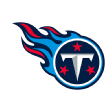 Marcus Mariota, QB, Tennessee Titans: Though his playing through a knee injury had something to do with his season-worst — and second-worst score of his career behind only his injury-shortened 2015 Week 15 (minus-0.72) — 3.46 fantasy points, that only casts further doubt on his utility these final weeks of 2017. Mariota was started in 17.1 percent of ESPN leagues, 18th-highest among quarterbacks, but that kept him in the QB2 discussion and has a bearing on those in larger or two-quarterback leagues. Yes, he faces a favorable matchup in the San Francisco 49ers in Week 15, but keep this in mind: After Mariota averaged 18.7 fantasy points per game in his first 24 career games, he has averaged just 12.6 in 15 since.
Marcus Mariota, QB, Tennessee Titans: Though his playing through a knee injury had something to do with his season-worst — and second-worst score of his career behind only his injury-shortened 2015 Week 15 (minus-0.72) — 3.46 fantasy points, that only casts further doubt on his utility these final weeks of 2017. Mariota was started in 17.1 percent of ESPN leagues, 18th-highest among quarterbacks, but that kept him in the QB2 discussion and has a bearing on those in larger or two-quarterback leagues. Yes, he faces a favorable matchup in the San Francisco 49ers in Week 15, but keep this in mind: After Mariota averaged 18.7 fantasy points per game in his first 24 career games, he has averaged just 12.6 in 15 since.
 DeMarco Murray, RB, Titans: In case you hadn’t noticed, and judging by his 58.6 percent start rate in ESPN leagues you haven’t, Murray has managed to put forth quite a few sub-10-point performances here and there, and is threatening to earn a spot on your bench for the fantasy playoffs. His 6.7 PPR fantasy points represented his eighth game out of 13 scoring beneath 10, with four coming in the six weeks since the Titans’ bye. Heads up: Murray has averaged just 2.8 yards per carry during that six-week span, so don’t be too quick to slot him immediately into your Week 15 lineup simply because he faces a favorable matchup on paper against the 49ers.
DeMarco Murray, RB, Titans: In case you hadn’t noticed, and judging by his 58.6 percent start rate in ESPN leagues you haven’t, Murray has managed to put forth quite a few sub-10-point performances here and there, and is threatening to earn a spot on your bench for the fantasy playoffs. His 6.7 PPR fantasy points represented his eighth game out of 13 scoring beneath 10, with four coming in the six weeks since the Titans’ bye. Heads up: Murray has averaged just 2.8 yards per carry during that six-week span, so don’t be too quick to slot him immediately into your Week 15 lineup simply because he faces a favorable matchup on paper against the 49ers.
 Jimmy Graham, TE, Seattle Seahawks: It was known entering the week that Graham and the Seahawks’ passing game faced a difficult matchup in a road game against the Jacksonville Jaguars, but while Russell Wilson overcame said matchup and a poor start to put up 21.84 fantasy points, Graham unfortunately was shut out on his two targets. It was the first time he was shut out in a game since 2014 Week 13, and it snapped a streak of 10 consecutive games with at least 10 PPR fantasy points, the second-longest such streak in his career. Graham was started in 88.4 percent of ESPN leagues, second-highest among tight ends.
Jimmy Graham, TE, Seattle Seahawks: It was known entering the week that Graham and the Seahawks’ passing game faced a difficult matchup in a road game against the Jacksonville Jaguars, but while Russell Wilson overcame said matchup and a poor start to put up 21.84 fantasy points, Graham unfortunately was shut out on his two targets. It was the first time he was shut out in a game since 2014 Week 13, and it snapped a streak of 10 consecutive games with at least 10 PPR fantasy points, the second-longest such streak in his career. Graham was started in 88.4 percent of ESPN leagues, second-highest among tight ends.
Facts & tidbits
In only his second game since returning from suspension, Cleveland Browns wide receiver Josh Gordon scored at least 10 PPR fantasy points, his 15.9 on six targets giving him a total of 28.4 on 17 targets so far. He became the first player to go at least 1,000 days between NFL games, then score at least 10 in his first two games upon his return, since John Beck did it in 2011 Weeks 6-7. Gordon is also only the seventh player to accomplish that since 1960, and three of the previous six did it in the AFL.
Carson Wentz’s 27.24 fantasy points led all quarterbacks through the 4 p.m. ET games, but the much bigger story was the knee injury that knocked him from the game, which the Eagles fear is a season-ending torn ACL, per ESPN’s Adam Schefter. If this indeed ends Wentz’s season, he finishes his sophomore year with a total of 281.74 fantasy points, which was already the 11th-best single-year total in history by any quarterback within the first two years of his NFL career.


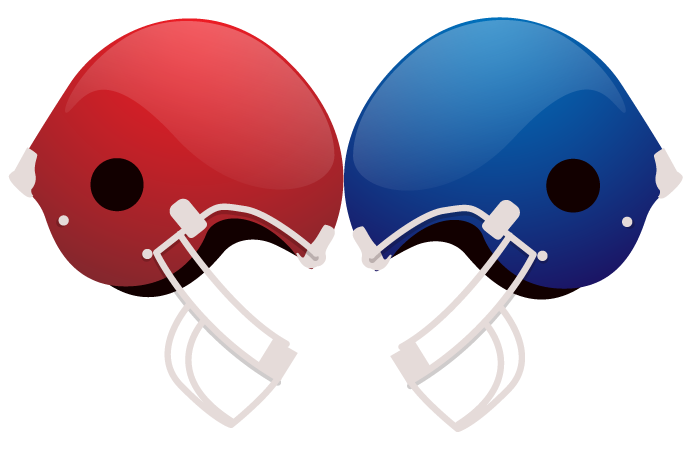

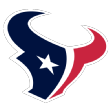
 DeAndre Hopkins, WR, Houston Texans: Who cares who is throwing him the football? Hopkins continues to carry his fantasy teams with huge scores, like his 35.9 PPR points that was tops among all players during the 1 p.m. ET games. It was the fourth time in his career that he had scored at least 35, and in each of the four he had a different quarterback throwing to him: Ryan Fitzpatrick for his career-best 44.8 in 2014 Week 13, Brian Hoyer for his 36.8 in 2015 Week 6, Deshaun Watson for his 36.4 in 2017 Week 8 and Tom Savage relieved by T.J. Yates on Sunday. Hopkins found his way onto a high percentage of ESPN playoff teams (49.5 percent, seventh-highest among wide receivers, and he was the second most-started wide receiver of Week 14 (98.8 percent of leagues). He has given his teams an excellent chance at advancing in the playoffs.
DeAndre Hopkins, WR, Houston Texans: Who cares who is throwing him the football? Hopkins continues to carry his fantasy teams with huge scores, like his 35.9 PPR points that was tops among all players during the 1 p.m. ET games. It was the fourth time in his career that he had scored at least 35, and in each of the four he had a different quarterback throwing to him: Ryan Fitzpatrick for his career-best 44.8 in 2014 Week 13, Brian Hoyer for his 36.8 in 2015 Week 6, Deshaun Watson for his 36.4 in 2017 Week 8 and Tom Savage relieved by T.J. Yates on Sunday. Hopkins found his way onto a high percentage of ESPN playoff teams (49.5 percent, seventh-highest among wide receivers, and he was the second most-started wide receiver of Week 14 (98.8 percent of leagues). He has given his teams an excellent chance at advancing in the playoffs. Rod Smith, RB, Dallas Cowboys: The Cowboys’ fill-in running backs during Ezekiel Elliott’s suspension have performed decently — Alfred Morris and Smith have combined for 113.0 PPR fantasy points on 134 touches in five games — but Smith’s performance on Sunday was either player’s best yet. The third-year player scored 33.0 PPR fantasy points, tops among running backs during the 1 p.m. ET games, obliterating his previous career high and in fact nearly doubling his season total entering the week (40.7). Smith made one big play count, scoring 15.1 of his 33.0 on an 81-yard touchdown on a short pass with just over four minutes to play, and he capped his day with a 15-yard rushing touchdown a little more than a minute later. That strong finish could — and should — make him a popular addition in the 73.0 percent of ESPN leagues in which he remains available, as he and the Cowboys face the Oakland Raiders in Week 15.
Rod Smith, RB, Dallas Cowboys: The Cowboys’ fill-in running backs during Ezekiel Elliott’s suspension have performed decently — Alfred Morris and Smith have combined for 113.0 PPR fantasy points on 134 touches in five games — but Smith’s performance on Sunday was either player’s best yet. The third-year player scored 33.0 PPR fantasy points, tops among running backs during the 1 p.m. ET games, obliterating his previous career high and in fact nearly doubling his season total entering the week (40.7). Smith made one big play count, scoring 15.1 of his 33.0 on an 81-yard touchdown on a short pass with just over four minutes to play, and he capped his day with a 15-yard rushing touchdown a little more than a minute later. That strong finish could — and should — make him a popular addition in the 73.0 percent of ESPN leagues in which he remains available, as he and the Cowboys face the Oakland Raiders in Week 15. Jamaal Williams, RB, Green Bay Packers: For the third consecutive week, Williams scored at least 20 PPR fantasy points, joining Alvin Kamara (five games, Weeks 9-13), Leonard Fournette (three games, Weeks 4-6) and Kareem Hunt (three games, Weeks 1-3) as the four rookie running backs with a streak at least that long this season. Williams’ 30.8 points on Sunday represented the most that he has scored in any of his 13 career games to date, as well as the second straight week he has had a big game while fellow rookie Aaron Jones has played a minimal role. Jones played two snaps to Williams’ 46 and had 8.0 PPR fantasy points on only one rushing attempt in Week 13, and Jones played seven snaps to Williams’ 52 and had minus-0.2 PPR fantasy points on four rushing attempts on Sunday, per Pro Football Focus’ Nathan Jahnke. Williams’ start percentage dropped from 69.6 percent in Week 13 to 45.2 percent on Sunday, but after a game like this, doesn’t it make a lot more sense for the Packers to simply stick with him as the starter next week?
Jamaal Williams, RB, Green Bay Packers: For the third consecutive week, Williams scored at least 20 PPR fantasy points, joining Alvin Kamara (five games, Weeks 9-13), Leonard Fournette (three games, Weeks 4-6) and Kareem Hunt (three games, Weeks 1-3) as the four rookie running backs with a streak at least that long this season. Williams’ 30.8 points on Sunday represented the most that he has scored in any of his 13 career games to date, as well as the second straight week he has had a big game while fellow rookie Aaron Jones has played a minimal role. Jones played two snaps to Williams’ 46 and had 8.0 PPR fantasy points on only one rushing attempt in Week 13, and Jones played seven snaps to Williams’ 52 and had minus-0.2 PPR fantasy points on four rushing attempts on Sunday, per Pro Football Focus’ Nathan Jahnke. Williams’ start percentage dropped from 69.6 percent in Week 13 to 45.2 percent on Sunday, but after a game like this, doesn’t it make a lot more sense for the Packers to simply stick with him as the starter next week? Jonathan Stewart, RB, Carolina Panthers: In large part because of the time-share in the Panthers’ backfield, Stewart has been rather difficult to predict from week to week this season. He scored 28.3 fantasy points (either PPR or non-PPR), his second-best single-game total in 129 career contests behind only his 30.2 in 2009 Week 16 using PPR scoring and career-best using non-PPR, on 16 rushing attempts. That’s quite a difference from Stewart’s production six weeks ago, when he scored minus-1.9 PPR fantasy points on 11 rushing attempts in one of the worst games by a running back in history. Unfortunately, here’s the story of his season in fantasy terms: Stewart was started in 44.4 percent of ESPN leagues in Week 9, but in only 8.87 percent of leagues on Sunday.
Jonathan Stewart, RB, Carolina Panthers: In large part because of the time-share in the Panthers’ backfield, Stewart has been rather difficult to predict from week to week this season. He scored 28.3 fantasy points (either PPR or non-PPR), his second-best single-game total in 129 career contests behind only his 30.2 in 2009 Week 16 using PPR scoring and career-best using non-PPR, on 16 rushing attempts. That’s quite a difference from Stewart’s production six weeks ago, when he scored minus-1.9 PPR fantasy points on 11 rushing attempts in one of the worst games by a running back in history. Unfortunately, here’s the story of his season in fantasy terms: Stewart was started in 44.4 percent of ESPN leagues in Week 9, but in only 8.87 percent of leagues on Sunday. Theo Riddick, RB, Detroit Lions: Making his second consecutive start in place of Ameer Abdullah, who was inactive because of what was reportedly a coach’s decision rather than his neck injury, Riddick challenged his career high in PPR fantasy points. His 27.3 fell just a half a point shy of his career best set in 2016 Week 1 (27.8), but they were also his most since 2016 Week 8 (also 27.3) and gave him a second straight week with at least 17.2. Riddick seems to be shaping up as the Lions’ goal-line back, passing-down back and an option on first and second downs, giving him a chance at weekly RB2 value for the remainder of the year. He remains available in 43.5 percent of ESPN leagues and was started in 19.9 percent on Sunday.
Theo Riddick, RB, Detroit Lions: Making his second consecutive start in place of Ameer Abdullah, who was inactive because of what was reportedly a coach’s decision rather than his neck injury, Riddick challenged his career high in PPR fantasy points. His 27.3 fell just a half a point shy of his career best set in 2016 Week 1 (27.8), but they were also his most since 2016 Week 8 (also 27.3) and gave him a second straight week with at least 17.2. Riddick seems to be shaping up as the Lions’ goal-line back, passing-down back and an option on first and second downs, giving him a chance at weekly RB2 value for the remainder of the year. He remains available in 43.5 percent of ESPN leagues and was started in 19.9 percent on Sunday. Jared Cook, TE, Raiders: He certainly seems to have the Kansas City Chiefs’ number, as for the second time this season, he scored at least 16.7 PPR fantasy points against them. His 18.5 on Sunday led all tight ends during the 1 p.m. ET games, and gave him the two best single-game scores by any tight end against the Chiefs all season — significant in that the Chiefs entered Week 14 having allowed the fifth-fewest PPR fantasy points per game to the position (9.5). The almost entirely unpredictable Cook — he had terrible scores in Weeks 12 and 13 facing outstanding matchups — was started in just 41.5 percent of ESPN leagues on Sunday, his lowest percentage since Week 7 (31.4 percent, also against the Chiefs).
Jared Cook, TE, Raiders: He certainly seems to have the Kansas City Chiefs’ number, as for the second time this season, he scored at least 16.7 PPR fantasy points against them. His 18.5 on Sunday led all tight ends during the 1 p.m. ET games, and gave him the two best single-game scores by any tight end against the Chiefs all season — significant in that the Chiefs entered Week 14 having allowed the fifth-fewest PPR fantasy points per game to the position (9.5). The almost entirely unpredictable Cook — he had terrible scores in Weeks 12 and 13 facing outstanding matchups — was started in just 41.5 percent of ESPN leagues on Sunday, his lowest percentage since Week 7 (31.4 percent, also against the Chiefs). Trey Burton, TE, Philadelphia Eagles: Thrust into the primary pass-catcher role with Zach Ertz (concussion) sidelined, Burton set career highs with 19.1 non-PPR and 24.1 PPR fantasy points on six targets. He was a popular pickup during the course of the day, perhaps in large part by managers seeking a last-minute replacement for Ertz, as he was started in a career-high 8.82 percent of ESPN leagues (topping his 8.38 percent in Week 9), was added in nearly 10 percent of leagues within the past week and roughly 3.3 percent between 1 and 4:30 p.m. ET alone. Should Ertz miss Week 15, Burton would face a great matchup against the New York Giants, so he’s well worth a stash if he’s still out there.
Trey Burton, TE, Philadelphia Eagles: Thrust into the primary pass-catcher role with Zach Ertz (concussion) sidelined, Burton set career highs with 19.1 non-PPR and 24.1 PPR fantasy points on six targets. He was a popular pickup during the course of the day, perhaps in large part by managers seeking a last-minute replacement for Ertz, as he was started in a career-high 8.82 percent of ESPN leagues (topping his 8.38 percent in Week 9), was added in nearly 10 percent of leagues within the past week and roughly 3.3 percent between 1 and 4:30 p.m. ET alone. Should Ertz miss Week 15, Burton would face a great matchup against the New York Giants, so he’s well worth a stash if he’s still out there. Demaryius Thomas, WR, Denver Broncos: His was quite the comeback game, and Thomas’ 23.3 PPR fantasy points on 12 targets actually set a new season high, not to mention his most in a single game since 2015 Week 8 (24.8). He was started in a season-low 52.3 percent of ESPN leagues, but that number is almost assuredly going to rise when he faces an outstanding matchup against the Indianapolis Colts in Week 15.
Demaryius Thomas, WR, Denver Broncos: His was quite the comeback game, and Thomas’ 23.3 PPR fantasy points on 12 targets actually set a new season high, not to mention his most in a single game since 2015 Week 8 (24.8). He was started in a season-low 52.3 percent of ESPN leagues, but that number is almost assuredly going to rise when he faces an outstanding matchup against the Indianapolis Colts in Week 15. Todd Gurley II, RB, Los Angeles Rams: What a game this was, and while Gurley’s team ultimately lost, his 28.5 PPR fantasy points was the highest individual score of any player from the 4 p.m. ET games. It was his best single-game total since Week 4 (28.5), and gave him a 34.8 point advantage over Le’Veon Bell, who plays on Sunday Night Football, for the top seasonal score among running backs. Gurley has 288.7 for the season, putting him on pace for 355.3, which would be the eighth-best total in history by a player aged 23 or younger.
Todd Gurley II, RB, Los Angeles Rams: What a game this was, and while Gurley’s team ultimately lost, his 28.5 PPR fantasy points was the highest individual score of any player from the 4 p.m. ET games. It was his best single-game total since Week 4 (28.5), and gave him a 34.8 point advantage over Le’Veon Bell, who plays on Sunday Night Football, for the top seasonal score among running backs. Gurley has 288.7 for the season, putting him on pace for 355.3, which would be the eighth-best total in history by a player aged 23 or younger. Matt Ryan, QB, Atlanta Falcons: His disappointing 2017 season continued on Thursday night with what was his worst single-game fantasy score all year (6.84), and eighth-worst out of 155 career contests. What’s more, he would have let fantasy teams down to an even greater extent if not for an 8-yard touchdown pass to Mohamed Sanu with fewer than 10 minutes remaining in the game. Ryan was started in 58.9 percent of ESPN leagues, seventh-highest among quarterbacks.
Matt Ryan, QB, Atlanta Falcons: His disappointing 2017 season continued on Thursday night with what was his worst single-game fantasy score all year (6.84), and eighth-worst out of 155 career contests. What’s more, he would have let fantasy teams down to an even greater extent if not for an 8-yard touchdown pass to Mohamed Sanu with fewer than 10 minutes remaining in the game. Ryan was started in 58.9 percent of ESPN leagues, seventh-highest among quarterbacks. Cameron Brate, TE, Tampa Bay Buccaneers: For only the third time in his 10 games played with Jameis Winston under center (even if only for a portion of the contest), Brate failed to score as many as five PPR fantasy points, finishing Sunday’s game with 2.1 on one target. It was a game that recalled his cold spell when Ryan Fitzpatrick was filling in: Brate has scored 20.4 PPR fantasy points on his 14 targets working with Fitzpatrick, those accrued over about five games’ worth of minutes played, but 102.8 on 48 targets working with Winston. Worse yet: Rookie O.J. Howard scored 13.4 PPR fantasy points on his six targets, and since Week 7, Howard now has 69.5 points on 26 targets, while Brate has 50.1 points on 33 targets. Brate can’t make a TE1 case at this point.
Cameron Brate, TE, Tampa Bay Buccaneers: For only the third time in his 10 games played with Jameis Winston under center (even if only for a portion of the contest), Brate failed to score as many as five PPR fantasy points, finishing Sunday’s game with 2.1 on one target. It was a game that recalled his cold spell when Ryan Fitzpatrick was filling in: Brate has scored 20.4 PPR fantasy points on his 14 targets working with Fitzpatrick, those accrued over about five games’ worth of minutes played, but 102.8 on 48 targets working with Winston. Worse yet: Rookie O.J. Howard scored 13.4 PPR fantasy points on his six targets, and since Week 7, Howard now has 69.5 points on 26 targets, while Brate has 50.1 points on 33 targets. Brate can’t make a TE1 case at this point. Charles Clay, TE, Buffalo Bills: His was a rapidly played, rushing-heavy game because of the heavy snow in Buffalo throughout the contest, but Clay was started in 12.5 percent of ESPN leagues and therefore belongs on the list regardless. He scored just 3.1 PPR fantasy points on five targets, the third time in his past five games he was held to five points or fewer.
Charles Clay, TE, Buffalo Bills: His was a rapidly played, rushing-heavy game because of the heavy snow in Buffalo throughout the contest, but Clay was started in 12.5 percent of ESPN leagues and therefore belongs on the list regardless. He scored just 3.1 PPR fantasy points on five targets, the third time in his past five games he was held to five points or fewer. Kirk Cousins, QB, Washington Redskins: Probably thanks in large part to his sixth-ranked-among-quarterbacks 222.66 fantasy points entering the week, Cousins was started in 42.5 percent of ESPN leagues, seventh-highest at the position, on Sunday. Unfortunately, he delivered his teams only 8.84 fantasy points, his second-worst total of 2017 and eighth-worst in his 54 career starts. Cousins’ chances for success don’t get much better in the next two weeks, as he’ll face the Arizona Cardinals, who have allowed 15.2 fantasy points per game since their Week 8 bye, in Week 15, then the Denver Broncos in Week 16.
Kirk Cousins, QB, Washington Redskins: Probably thanks in large part to his sixth-ranked-among-quarterbacks 222.66 fantasy points entering the week, Cousins was started in 42.5 percent of ESPN leagues, seventh-highest at the position, on Sunday. Unfortunately, he delivered his teams only 8.84 fantasy points, his second-worst total of 2017 and eighth-worst in his 54 career starts. Cousins’ chances for success don’t get much better in the next two weeks, as he’ll face the Arizona Cardinals, who have allowed 15.2 fantasy points per game since their Week 8 bye, in Week 15, then the Denver Broncos in Week 16. Robby Anderson, WR, New York Jets: He got a good percentage of ESPN fantasy teams into the playoffs — he was on a playoff roster in 56.9 percent, second-highest among wide receivers — but Anderson’s 5.7 PPR fantasy points on six targets on Sunday might’ve put those same squads in jeopardy of a first-round exit. He was started in 50.5 percent of leagues, 22nd-highest among wide receivers, so despite the bad matchup against the Denver Broncos, many in fantasy were still willing to risk it. Anderson’s so-so performance isn’t entirely his fault, as Josh McCown was lost late in the third quarter to a broken left/non-throwing hand, but that’s something that’ll need to be monitored heading into Week 15. Should McCown not be able to play, it’d be Bryce Petty likely getting the start, which is a poor mix in another tough matchup at New Orleans.
Robby Anderson, WR, New York Jets: He got a good percentage of ESPN fantasy teams into the playoffs — he was on a playoff roster in 56.9 percent, second-highest among wide receivers — but Anderson’s 5.7 PPR fantasy points on six targets on Sunday might’ve put those same squads in jeopardy of a first-round exit. He was started in 50.5 percent of leagues, 22nd-highest among wide receivers, so despite the bad matchup against the Denver Broncos, many in fantasy were still willing to risk it. Anderson’s so-so performance isn’t entirely his fault, as Josh McCown was lost late in the third quarter to a broken left/non-throwing hand, but that’s something that’ll need to be monitored heading into Week 15. Should McCown not be able to play, it’d be Bryce Petty likely getting the start, which is a poor mix in another tough matchup at New Orleans. Marcus Mariota, QB, Tennessee Titans: Though his playing through a knee injury had something to do with his season-worst — and second-worst score of his career behind only his injury-shortened 2015 Week 15 (minus-0.72) — 3.46 fantasy points, that only casts further doubt on his utility these final weeks of 2017. Mariota was started in 17.1 percent of ESPN leagues, 18th-highest among quarterbacks, but that kept him in the QB2 discussion and has a bearing on those in larger or two-quarterback leagues. Yes, he faces a favorable matchup in the San Francisco 49ers in Week 15, but keep this in mind: After Mariota averaged 18.7 fantasy points per game in his first 24 career games, he has averaged just 12.6 in 15 since.
Marcus Mariota, QB, Tennessee Titans: Though his playing through a knee injury had something to do with his season-worst — and second-worst score of his career behind only his injury-shortened 2015 Week 15 (minus-0.72) — 3.46 fantasy points, that only casts further doubt on his utility these final weeks of 2017. Mariota was started in 17.1 percent of ESPN leagues, 18th-highest among quarterbacks, but that kept him in the QB2 discussion and has a bearing on those in larger or two-quarterback leagues. Yes, he faces a favorable matchup in the San Francisco 49ers in Week 15, but keep this in mind: After Mariota averaged 18.7 fantasy points per game in his first 24 career games, he has averaged just 12.6 in 15 since. Jimmy Graham, TE, Seattle Seahawks: It was known entering the week that Graham and the Seahawks’ passing game faced a difficult matchup in a road game against the Jacksonville Jaguars, but while Russell Wilson overcame said matchup and a poor start to put up 21.84 fantasy points, Graham unfortunately was shut out on his two targets. It was the first time he was shut out in a game since 2014 Week 13, and it snapped a streak of 10 consecutive games with at least 10 PPR fantasy points, the second-longest such streak in his career. Graham was started in 88.4 percent of ESPN leagues, second-highest among tight ends.
Jimmy Graham, TE, Seattle Seahawks: It was known entering the week that Graham and the Seahawks’ passing game faced a difficult matchup in a road game against the Jacksonville Jaguars, but while Russell Wilson overcame said matchup and a poor start to put up 21.84 fantasy points, Graham unfortunately was shut out on his two targets. It was the first time he was shut out in a game since 2014 Week 13, and it snapped a streak of 10 consecutive games with at least 10 PPR fantasy points, the second-longest such streak in his career. Graham was started in 88.4 percent of ESPN leagues, second-highest among tight ends.